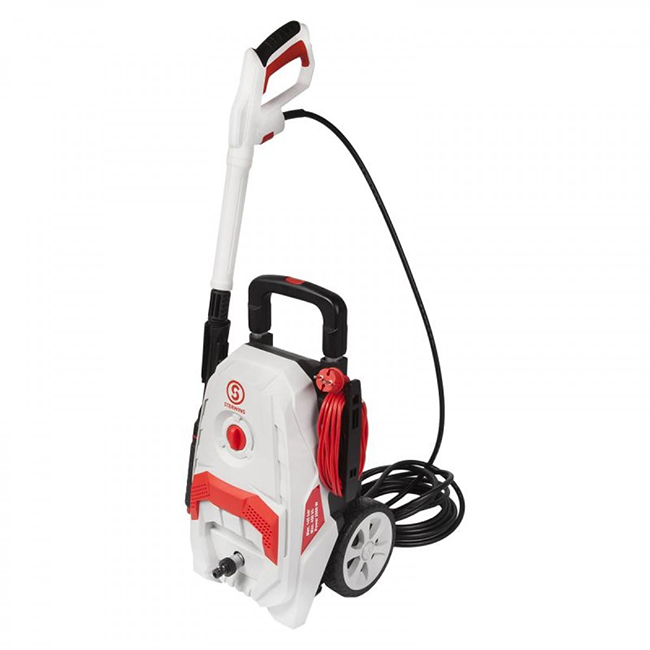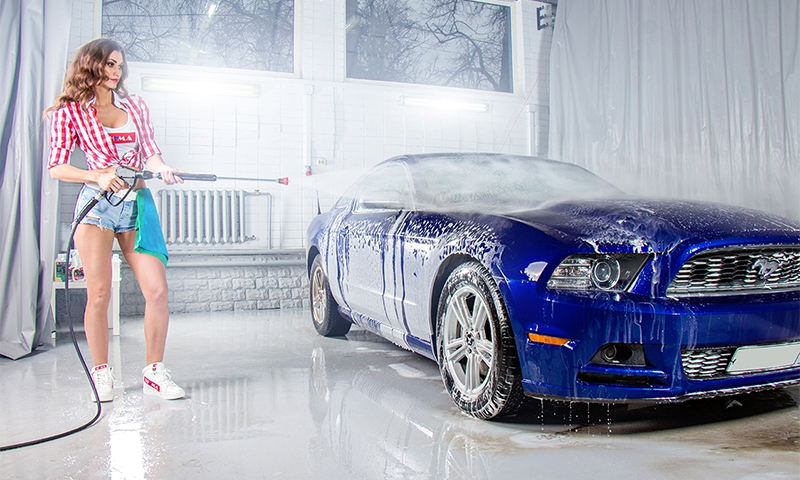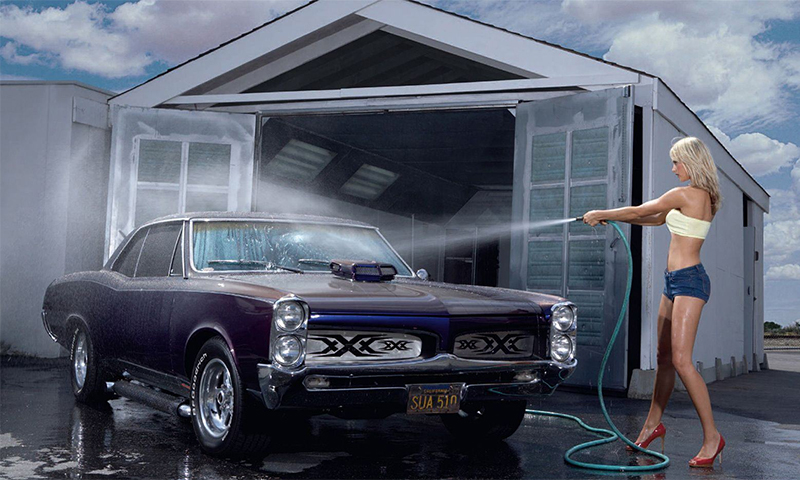Once, garden tools, a bicycle, a house facade and a car had to be cleaned manually. At best, a rubber hose was used, from which, like from a stream, precious water now flowed. In modern times, manual cleaning is not in fashion, and this is not surprising, since the shops are overflowing with high-pressure washers. Many models are available in price, they are light and compact, in addition, they are easy and convenient to use. It remains only to go to the store and buy such a now necessary cleaning appliance. Since such units are far from being primitive, their cost is considerable, and there are many offers, it is reasonable to do the following: first read the article about the subtleties of choice, and then go shopping.

Content:
The best manufacturers of high pressure washers - which company to choose
There is a list of parameters by which the mini-wash is selected. Of course, the main ones are pressure, power and performance. But the buyer will not make a mistake if he starts the selection with the name of the manufacturer. The best companies, according to users, are listed below.
- Karcher.
- Bosch.
- Makita.
- Nilfisk-alto.
- Interskol.
You can immediately pick up a specific model of one of these companies. To do this, read rating of the best pressure washers.
Principle of operation and high pressure washer

High pressure washers are multifunctional devices designed for cleaning: garages, cars, fences, floors, garden tools and many other objects that are not contraindicated in water.
The equipment includes:
1. Housing;
2. Water pump;
3. Motor;
4. Castors and handle;
5. Spray gun;
6. Cable;
7. Supply and pressure hoses.
Devices are:
1. Household - connected to the cigarette lighter (12 V) or to the outlet (220 V),
2. Professional - powered by a three-phase network or work on liquid fuel (gasoline or diesel).
For the introduction of equipment in working condition usually the supply hose is connected to the water supply, the cable is connected to the electrical network, the spray gun is put on the gun.
After switching on the device, the motor and the pump begin to function, the liquid is directed into the pressure flexible pipe, as a result a pinch or fan jet is pulled out from the nozzle under high pressure.
In the process of removing contaminants, the feed is controlled by a pistol trigger, the head is regulated by a nozzle. The source of water can be not only the plumbing, but also a filled container - then a hose equipped with a filter and a check valve is used.
Often you have to use detergent - in order not to apply it manually, most models are equipped with a tank for cleaning composition. In addition, for a more effective result, different nozzles, brushes, jet tubes, shampoos, gels, wax polishes are additionally used.
Types of high pressure washers
Elementary class

For cleaning minor dirt suitable primary class mini-sinks. They are designed for low loads, therefore, they are characterized by low operating performance: with a capacity of up to 1.5 kW, a capacity of up to 350 l / h, a pressure of up to 110 bar, an operating life of 50 ... 100 hours
Pumps of such equipment are made mainly of plastic, and in a non-separable version. The connection is made only to the water supply: when withdrawing from the tank, performance drops sharply.
Available units in the minimum required configuration. This technique, which is natural, inexpensive, in addition, it is light, compact and economical.
Benefits:
- practicality: cleaning is performed 2 ... 4 times faster than manual cleaning;
- economical water consumption: use is calculated to half an hour once a week;
- functioning not only from the mains (220 V), but also from the vehicle's cigarette lighter (12 V);
- ease of use and ease of use;
- lightness and compactness;
- affordable cost.
Disadvantages:
- inefficiency when drawing water from a tank or other free-flow source;
- use of cheap materials;
- low maintainability.
Sink of an initial class suits for periodic simple cleaning. If you use it for 20 ... 30 minutes once a week, then you can clean the veranda, bicycle and garden equipment for up to 5 years.
Middle class

For more complex cleaning, mini-sinks of the middle class with an increased working resource are intended. They are designed for power up to 2.1 kW, capacity up to 450 l / h, pressure up to 140 bar. For the manufacture of the pump is used not plastic, but aluminum, brass, silumin.
You can take water from a barrel, a well or a reservoir: a drop in performance is not as noticeable as in the former case - the only thing is that the suction hose must be braided, with a check valve and a filter.
For gentle operation, a “total stop” system is provided: it automatically turns off the engine at critically high pressure. Such equipment is already equipped better and higher.
Benefits:
- wide range of applications: from shovels and windows to SUVs and boats;
- possibility of disassembling and assembling the pump: for preventive maintenance or repair;
- availability of operation when collecting from the tank;
- availability of models with a tank for detergents;
- the ability to control the pressure;
- optimum weight, dimensions and prices.
Disadvantages:
- reduction of working life when using water from the tank;
- connection is possible only to the 220 V electrical network, which is not suitable for private houses with three-phase power (380 V).
In a week, with a middle class sink you can clean 2 cars, refresh the facade, put in order the local area. When using the nozzle "mud mill" available to remove the old paint and dried cement.
Upper class

High-end units are almost semi-professional, as evidenced by their characteristics: power up to 3.0 kW, capacity up to 600 l / h, pressure up to 160 bar.
Working parts are made of metal, ceramics, metal ceramics; the drive is provided not only axial, but also crank-connecting rod; Power is available from both single-phase (220 V) and three-phase (380 V) mains.
If the above models are more or less limited in equipment, then these devices are completed to the maximum. They are protected from water hammering, “dry running”, sand impurities in the incoming water.
Benefits:
- multifunctional use and a large working resource;
- comprehensive protection: overheating, extremely high pressure, unclean water;
- maintainability: constructive nodes - collapsible;
- wide range: the presence of electric and gasoline, mobile and stationary units;
- possibility of use in both domestic and commercial scales;
- price availability of many models.
Disadvantages:
- the high cost of most devices;
- expensive repair.
Sinks of the highest class are designed for high loads and are able to function daily. For them, there is practically no impracticable work: they clean the sidewalks, sewer pipes, drilling rigs, dump trucks and yachts.
Professional car wash

Professional harvesting equipment has enormous working resources and is characterized by appropriate technical, operational and commercial parameters.
For example, some units weigh up to 400 kg, cost several hundred thousand rubles, and create pressure up to 1500 bar - the latter figure is an order of magnitude higher than that of household appliances of the highest class. Materials are used exclusively wear-resistant, up to alloy steel of special composition.
Such machines are relatively technically complex, they are on the balance of legally responsible organizations, therefore only specially trained people manage them.
Benefits:
- incomparable higher performance compared with domestic counterparts;
- technical possibility of long continuous operation;
- colossal working resource: at least 10 years of regular use;
- possibility of operation in extreme conditions;
- profitability: “services” of such equipment are expensive and they are in demand;
- maintainability.
Disadvantages:
- relatively high cost;
- local technical and operational flaws of different models.
Professional units are used daily, both at the service station level and on an industrial scale. With their help, cars, combines, floors in hypermarkets, runways and infrastructure facilities are cleaned.
High pressure washer selection options

Power supply
Sink can function only at connection to a power source.
This may be:
1. Cigarette lighter in the car (12 V)
2. Single and three-phase power grid in the house (220 and 380 V),
3. Liquid fuel, such as gasoline or diesel.
Resource
The main parameter is also a resource, which is counted in working hours. The minimum is in household appliances of the initial class and is 50 ... 100 hours.
With increasing equipment rating, this parameter increases. In this case, the buyer must decide on the mode of operation and choose a device that would serve at least 5 years.
Repairability
Construction sites sometimes fail. Often the problem is available to fix with your own hands, but, for example, primary class pumps are made of plastic and are non-separable. In this case, nothing remains, how to throw them away and buy new ones.
It is desirable to stop at the water pump in a folding design, and with metal parts. In this case, the question of choice rests on financial opportunities.
Filter
A required attribute of the suction hose is a filter. This small bezel is small and inexpensive, but the availability of all equipment often depends on its presence or absence.
If the water is unclean and there is no filter, problems can arise anywhere on the pressure system. Together with this part you need to install a check valve.
Hose length
Any wash should be comfortable to use. This parameter depends on the length of the hose. The size in this case is selected individually, taking into account the specifics of the cleaning work. The length can be either 4 or 20 m.
Protection
Equipment of this level is equipped with safety systems.
When choosing, it is imperative to pay attention to the presence of the following protective systems:
1. Overheat protection;
2. Hydraulic shock protection;
3. Protection against low-quality water.
Equipment
The operation of the device is impossible without the following auxiliary components:
1. Nozzles;
2. Extension pipes;
3. Brush;
4. Detergent.
Most often they are used when cleaning the car.
Warranty
After determining the choice, attention is necessarily paid to the accompanying documentation. In particular, warranty obligations and possibilities of their provision are evaluated.
What high pressure washer to choose

1. If a bicycle or a scooter, a garden tool or a veranda is to be cleaned, and no more than once a week, an initial-class unit will be enough. The equipment must be connected to the watering faucet and optionally to a car cigarette lighter or a single-phase network. Filled barrel can be a source of water, if you install it on a high stand.After operating the device, it should be stored in a room with a positive temperature.
2. When in the plans (once every 7 days) cleaning a car or boat, garden paths or a facade, a middle class car will do. It works from a network of 220 V and takes water from a water supply system or a barrel. When cleaning the car can be used hot water, special shampoo, wax polish. If there is significant pollution on the facade or on the pavement, a nozzle, called a milling cutter, is used. In the absence of a single-phase network, there is a technical possibility to arrange it as a subsystem.
3. If you need daily cleaning of cars, trucks, buses, as well as removing rust from pipes and paint from the floors, you must use a high-class mini-sink. She has a great resource, excellent characteristics, in addition, there are no long breaks during operation. Such equipment is just right for families that own a fleet of several cars.
How much does a high pressure car wash cost?

1. Household primary class: 1.8 ... 186.0 thousand rubles.
2. Household middle class: 1.8 ... 150, 0 thousand rubles.
3. Domestic class: 3.1 ... 150, 0 thousand rubles.
4. Professional: 4.4 ... 452.0 thousand rubles.
It will be interesting to friends too







